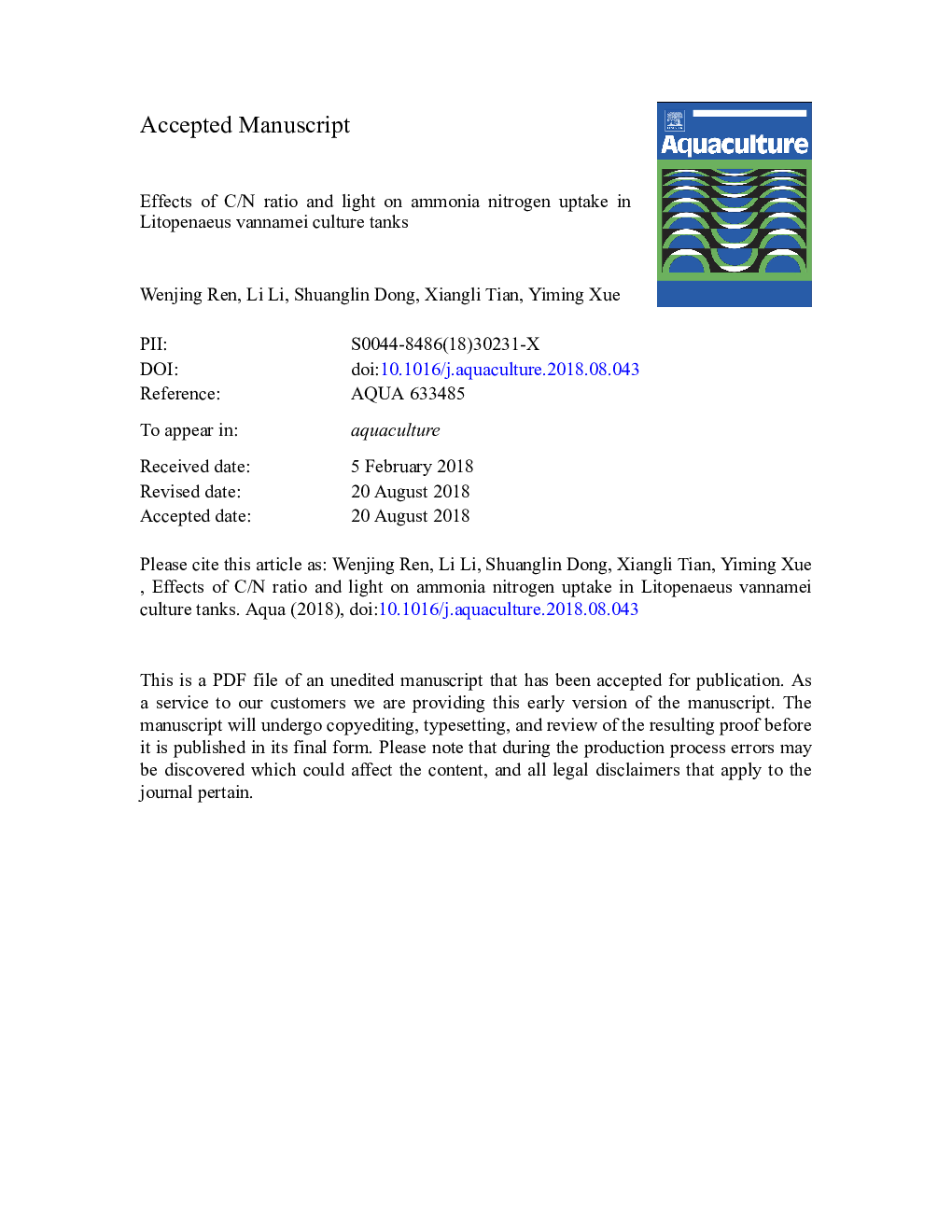| Article ID | Journal | Published Year | Pages | File Type |
|---|---|---|---|---|
| 10137350 | Aquaculture | 2019 | 40 Pages |
Abstract
A 49-day trial was conducted to study the effect of the C/N ratio and light on water quality, growth performance, and antioxidant enzyme activities in hepatopancreas and plasma of Litopenaeus vannamei juveniles in an outdoor tank system. Four treatments with three replicates were created: heterotrophic without light (HD), heterotrophic with light (HL), chemoautotrophic without light (CD), and chemoautotrophic with light (CL). The HD and CD systems were kept in the dark and natural photoperiod was maintained in the HL and CL systems. Molasses was added to the heterotrophic treatments and the chemoautotrophic treatments received no added molasses. The accumulation of nitrite and nitrate was observed in CD. However, water quality parameters were managed properly in the HD and the heterotrophic treatments were less dependent on light than the chemoautotrophic treatments. Heterotrophic bacteria effectively assimilated ammonia and maintained good water quality in the HD and HL treatments after 14â¯days. The heterotrophic bacterial counts were not different among the four treatments. The total bacteria counts tended to be higher in the heterotrophic systems than the chemoautotrophic systems, but the difference was not significant. The CL treatment had the highest survival rate, lowest feed conversion ratio (FCR), and the lowest total antioxidant capacity (T-AOC), glutathione (GSH) and malondialdehyde (MDA) concentrations in the hepatopancreas indicating better health status of the shrimp. These results indicate that differences in light and C/N management can lead to substantial disparities in system function and performance of shrimp.
Keywords
Related Topics
Life Sciences
Agricultural and Biological Sciences
Aquatic Science
Authors
Wenjing Ren, Li Li, Shuanglin Dong, Xiangli Tian, Yiming Xue,
